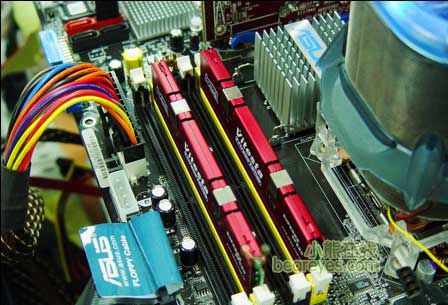Intel unveils "triple-channel" memory technology, heralding the arrival of the DDR3 era.
Three-Channel Memory Technology to Replace Current Dual-Channel Memory
Reported on October 28th, Intel's Nehalem processor is currently the most anticipated product. Previously, there were reports that the Nehalem platform would launch a quad-core processor by the end of next year and the first eight-core processor in early 2009. Currently, preparations are underway for the Bloomfield quad-core processor based on the Nehalem architecture at the end of next year. The Tylersburg-DT chipset, which will be paired with Bloomfield, has also entered an intensive development phase. However, we still don’t know much about the technical specifications of the Tylersburg-DT chipset, but it is certain that it will continue to upgrade from the X48.
Recently, websites like dvhardware have reported that Intel’s Tylersburg-DT will support "three-channel" DDR3 memory with a maximum supported frequency of 1600MHz, which can be further increased through overclocking. We already know a lot about the "dual-channel" memory technology introduced by Intel, which was developed to compensate for insufficient memory bandwidth. With continuous technological advancements, the execution efficiency and operating frequency of CPUs have significantly improved under the new architecture. Meanwhile, memory has transitioned from the DDR era into the DDR3 era, making memory bandwidth increasingly important.
If this news turns out to be true, the Tylersburg-DT chipset will simultaneously support DDR3 1600 memory and a 1600MHz front-side bus. The memory bandwidth brought about by three-channel memory technology is astonishing. According to the calculation method for dual-channel memory, the bandwidth of three-channel DDR3 1600 memory will reach 800×2×(64/8)×3 = 57600MB/s = 57.6GB/s (the operating frequency of DDR3 1600 memory is 800MHz). In contrast, the bandwidth of dual-channel DDR400 memory is only 6.4GB/s, showing a difference of six times. It is evident that Intel's three-channel memory technology holds significant importance for the development of PC technology. However, it is certain that AMD will also develop similar technology.
